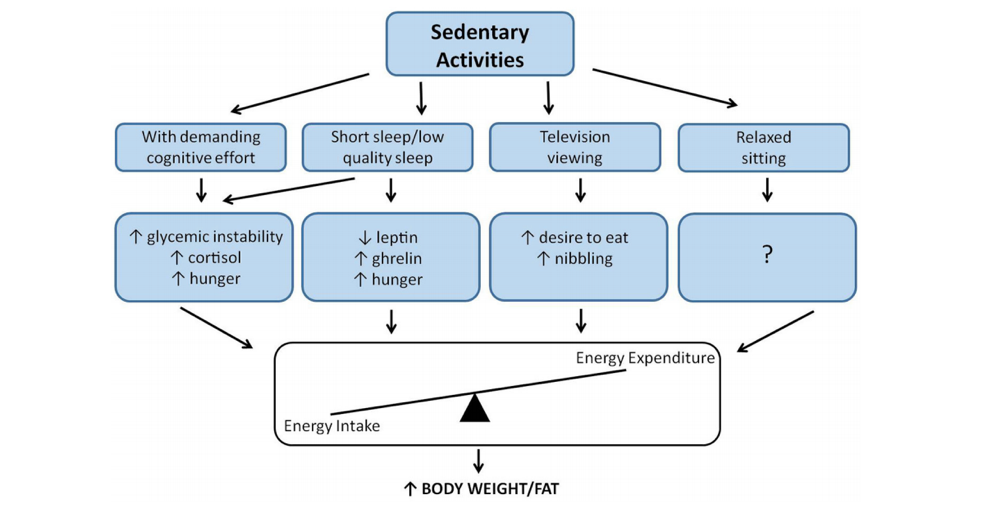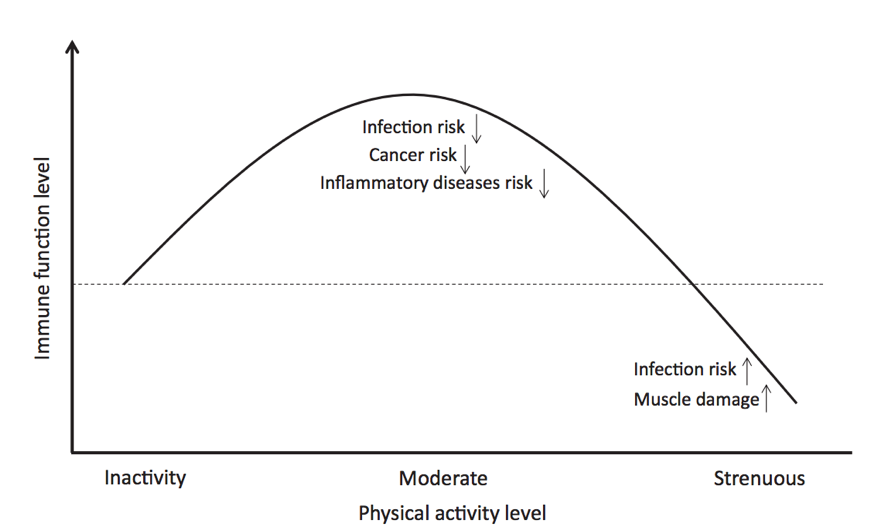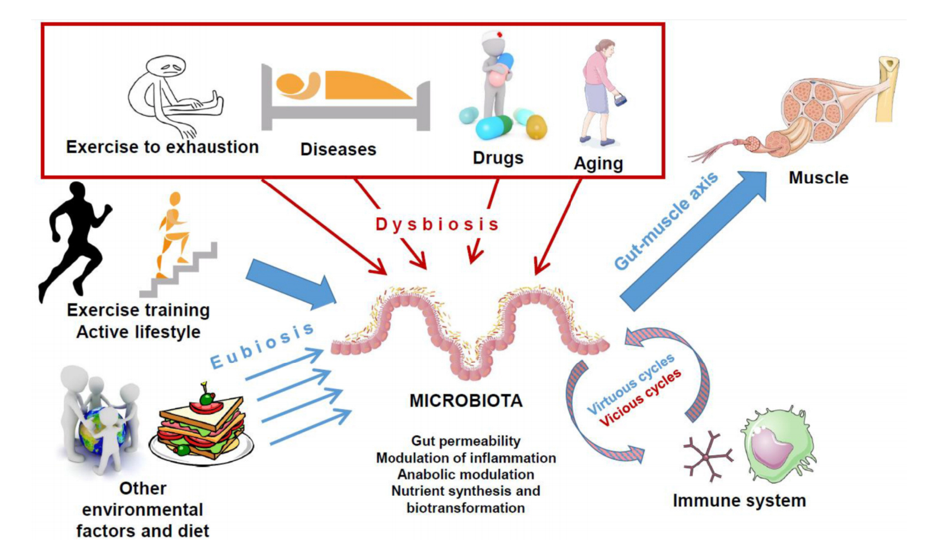Due to the health crisis caused by COVID-19, the importance of physical exercise and, in turn, daily physical activity, is reassessed for its implication on our health.
It is important that we take care of our physical and mental health. Therefore, the World Health Organization (WHO) has provided five tips for dealing with this situation, namely: healthy eating, limiting alcohol consumption and sugary drinks, not smoking, maintaining social relations, and doing some form of physical exercise for at least 30 minutes a day. The aim of this newsletter is to present the benefits of physical activity and exercise in light of the current pandemic.
Tania Mesa – Director of Neolife Nutrition and Nursing Unit
Alejandro Monzó – Neolife Nutrition and Nursing Unit
The level of physical activity may condition immune function
From the moment we’re born, we are continuously exposed to infections, to which we would succumb if it were not for the fact that we have a physiological system that defends us from them: the immune system. Immune cells, or leukocytes, possess a broad functional capacity, as well as multiple and complex forms of communication (1).
Physical inactivity has been shown to be a real cause of over 35 chronic diseases and conditions (2). Some of these are serious chronic diseases, such as insulin resistance that leads to type II diabetes, premature aging that leads to Alzheimer’s disease, and a lower immune system response that causes infections, as well as other diseases or risk factors, which lead to cardiovascular disease, obesity, and metabolic syndrome. As a result, evidence supports that physical inactivity is a real cause of a shorter period of good health and early mortality (2,3).
For starters, it’s important to differentiate the concepts of “physical activity” and “physical exercise” (4). Physical activity is defined as any body movement produced by the skeletal muscles that requires the expenditure of energy. Regular and adequate levels of physical activity have been shown to reduce the risk of high blood pressure, coronary heart disease, stroke, diabetes, cancer, and depression, improve bone health, and are essential to weight management. Physical exercise is the type of physical activity that is planned, structured, repetitive, and chosen as a means to achieve a goal related to the improvement or maintenance of one or more fitness components. We may say that physical activity includes physical exercise, as well as other activities that involve body movements and are carried out as part of the working day, active transportation, household chores, and recreational activities.
During the current COVID-19 health crisis, our physical activity has been drastically reduced due to the confinement we’ve been practicing. This poses a risk, both physically and mentally, and everyone should be aware of it. For example, a review published by Frontiers in Public Health shows that a sedentary lifestyle and body weight gains (especially fat mass) are risk factors for our health (Figure 1), because they compromise the correct regulation of the immune system (5).

The immune system mediates numerous pathologies, so it’s important to know it’s structured and how it works. It is classified as innate and adaptive. The innate immune system provides an early and non-specific response against microorganisms (it is our first line of defense). On the other hand, the adaptive immune system provides us with a specific response to different molecules, possesses memory against antigens, and the diversity to react to a wide variety of antigens (6). There is growing evidence that physical exercise changes both systems.
Muscular work has been shown to directly trigger energy consumption and beneficial metabolic changes in relation to the immune system (7). A study published in Nutrition and Enhanced Sports Performance shows that moderate-intensity exercise improves immune function compared to inactivity, thus decreasing the incidence of respiratory infections, cancer, and inflammatory diseases (Figure 2). However, vigorous exercise temporarily suppresses immune function and may increase the risk of airway infection and muscle damage.

At the molecular level, regular exercise decreases the circulation of inflammatory cytokines and oxidative stress, also improves the function of resting immune cells. In this regard, thanks to an active life, molecules are produced that favorably regulate immune mechanisms, with anti-inflammatory actions, thus contributing to the maintenance of a strong immune system (6,7).
It is worth mentioning a recent study published in Exercise Immunology Review, which shows that an active lifestyle can be a modulator of the composition of the gut microbiota, leading to a greater biodiversity (8). The gut microbiota is the set of bacteria that live in the gut and perform key functions for survival, such as providing the body with nutrients and vitamins, digesting food, or educating the immune system so it may develop its function (9). That said, the aforementioned study combines the concepts of physical-microbiota-immune system activity (Figure 3), thus forming an axis with closely linked elements. The benefits of physical exercise may lead to healthy bacteria populations involved in good immune system regulation to combat chronic infections, diseases, and conditions (8,10).

Those who are most at risk of suffering complications from the COVID-19 respiratory virus are people over 65 years of age and people of all ages with certain conditions, such as immunosuppression, or chronic heart, lung, kidney, blood, or metabolic diseases (11). In general, physical exercise therapy seems to be promising, but we have yet to identify many of the mechanisms involved in it, as well as the type of exercise and the appropriate dose to achieve an adequate immune response (12).
- Physical activity may help remove bacteria from the lungs and airways. This may reduce the likelihood of catching a cold, flu, or other illnesses.
- Exercise causes changes in antibodies and white blood cells. These can circulate faster, so they can detect diseases faster than they would have done otherwise.
- Exercise decreases the secretion of stress hormones. A high level of stress increases the likelihood of a disease.
- The brief elevation of body temperature during and immediately after exercise may prevent bacterial growth, thus better combating infection.
Here at Neolife, we wish to convey how important it is for us to take care of our health during self-isolation. Now more than ever, it is essential for us to stay active at home because, as we have seen, physical activity influences how we manage stress, boost our immune system, and maintain a healthy body weight. Low levels of physical activity may have negative effects on our health, well-being, and quality of life, so here are some recommendations for steps you can implement during these weeks of self-isolation:
- Use any household chore as an excuse to move around. Look for opportunities to move while you do your daily tasks; every small movement counts.
- Exercise at home. You can do workouts with just your own body; you don’t need to use machines. Squats, planks, push-ups, sit-ups… even with the furniture in your house, they are very useful exercises. The Internet gives us the opportunity to search for videos, apps, and workout routines. Do them with your family; remember that doing sports with others is much more bearable and fun.
- Use household objects as weights. There are many items at home that can be used as exercise weights, such as water bottles, milk containers, or detergent bottles. You can also hold them while doing squats.
- Practice meditation exercises. Maintaining a good mental state is also very important. Yoga, meditation, listening to music, and drawing, as well as cleaning or reading are activities that make you focus on what you’re doing and provide good stress relief.
- Do aerobic activities. Going up and down stairs can be a great option if you want to do cardiovascular activities. If you’re going up to a higher floor, take the opportunity to go up and down a couple more times. You can also jump rope if you have one at home, or even play active games that involve running or playing music and dancing.
One more day is one less day; let’s start appreciating what really matters most: our health!
BIBLIOGRAPHY
(1) Ishikawa T. (2014). “”. Sociedad Española de Inmunología. European Federation of Immunological Societies.
URL: https://www.inmunologia.org/pdf/LibroSEI.pdf
(2) Booth, F.W. et al. (2017). “Role of inactivity in chronic diseases: evolutionary insight and pathophysiological mechanisms”. Physiol Rev. Vol. 97(4): 1351-1402.
URL: https://www.ncbi.nlm.nih.gov/pmc/articles/PMC6347102/
(3) Liliana P. Rodota and María Eugenia Castro. “Nutrición clínica y dietoterapia” [Clinical nutrition and diet therapy]. Editorial Médica Panamericana, 1st Edition, 2012.
(4) WHO. (2019). “Global Strategy on Diet, Physical Activity and Health”. World Health Organization. URL: https://www.who.int/dietphysicalactivity/pa/en/
(5) Pahani & Tremblay (2018). “Sedentariness and health: Is sedentary behavior more than just physical inactivity?”. Public Health 6:258.
URL: https://www.ncbi.nlm.nih.gov/pmc/articles/PMC6139309/pdf/fpubh-06-00258.pdf
(6) Toche P. Paola. (2012). “Visión panorámica del sistema inmune” [Panoramic view of the immune system] . Revista Médica Clínica Las Condes. Vol. 23 (8): 446-457.
(7) Aoi W. & Naito Y. (2019). “Immune function, nutrition and exercise”. Nutrition and Enhanced Sports Performance (2º Ed.). Pages 83-95.
URL: https://www.sciencedirect.com/science/article/pii/B9780128139226000072
(8) Ticinesi A. et al. (2019). “Exercise and immune system as modulators of intestinal microbiome: implications for the gut-muscle axis hypothesis”. Exerc. Immunol Rev
URL: https://www.ncbi.nlm.nih.gov/pubmed/30753131
(9) De Luis Román, D.A. Bellido Guerrero, D. García Luna, P.P. Olivera Fuster, G. (2017). “Dietoterapia, nutrición clínica y metabolismo” [Diet therapy, clinical nutrition, and metabolism]. Third edition. Sociedad Española de Endocrinología y Nutrición. Grupo Aula Médica, S.L. Madrid, Spain.
(10) Lancaster, G.I. & Febbraio M.A. (2016). “Exercise and the immune system: implications for the elite athletes and the general population”. Immunol Cell Biol. Vol. 94(2): 155-6.
URL: https://www.ncbi.nlm.nih.gov/pubmed/26667594 (11) Portal Regional de la BVS. (2020). “Enfermedad por coronavirus (COVID-19)” [Coronavirus disease (COVID-19)]. URL: https://bvsalud.org/vitrinas/es/post_vitrines/nuevo_coronavirus/ (12) Castellanos Puerto, E. (2012). “Ejercicio físico e inmunidad en el anciano” [Physical exercise and immunity in the elderly]. Rev Cubana Med Gen Integr. Vol. 28(2): 72-78. URL: https://scielo.sld.cu/pdf/mgi/v28n2/mgi08212.pdf (13) MedlinePlus. (2018). “Exercise and immunity”. U.S. National Library of Medicine. URL: https://medlineplus.gov/ency/article/007165.htm
